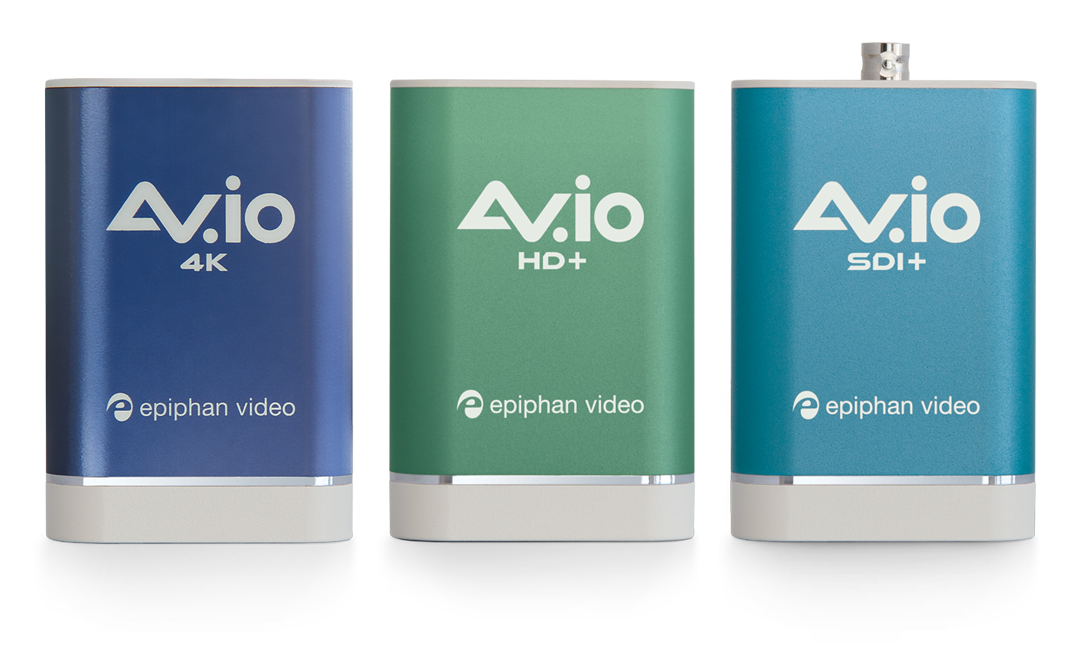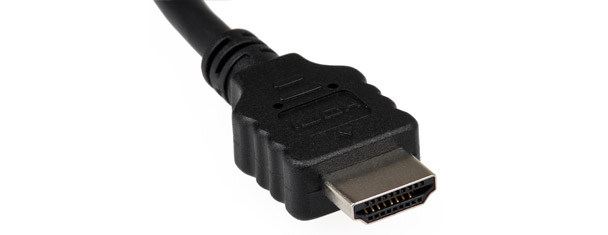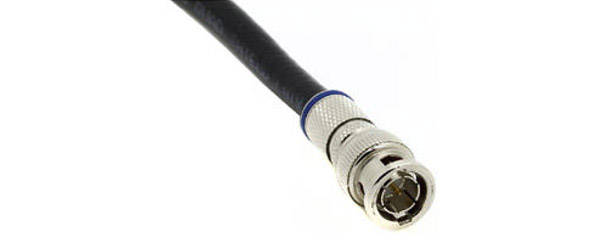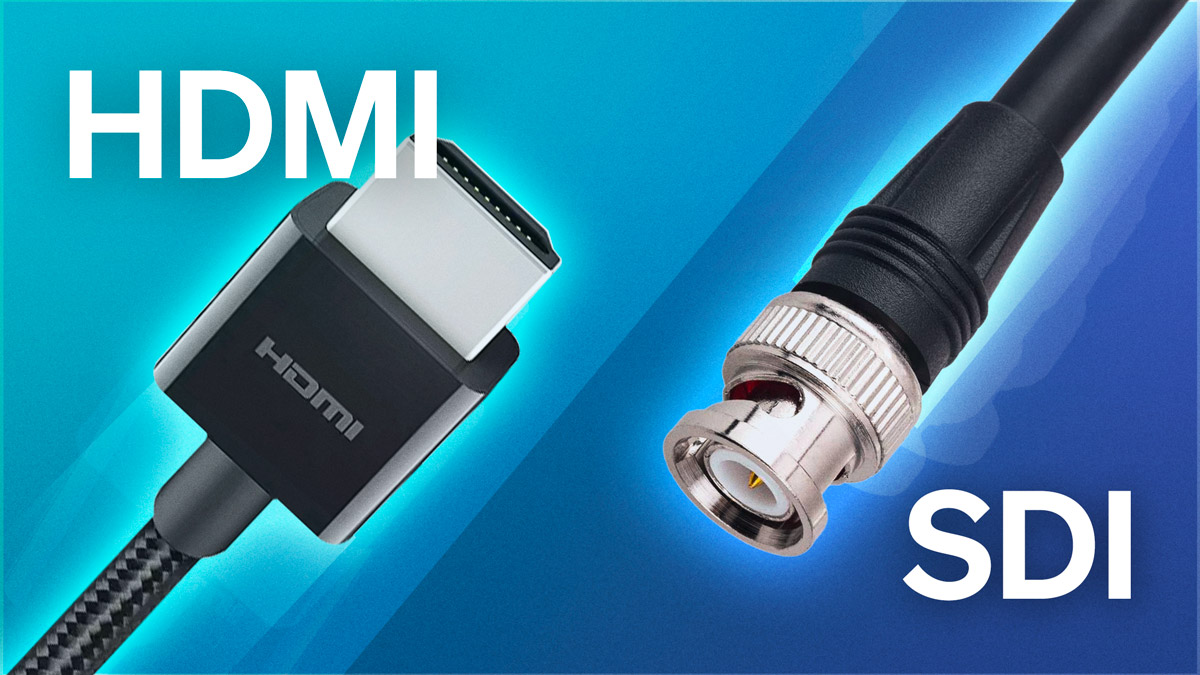HDMI and SDI are the two main cable options for connecting a video source to your mixer, streaming device, recording device, or encoder. But what are the differences between HDMI and SDI, and which one is right for you?
In this post, we’ll describe both HDMI and SDI, and explain when you’d want to choose one connector type over the other.
The main difference between HDMI and SDI
Both HDMI and SDI cables transmit audio and video signals from a source to a display. The key difference between them is that SDI is a connection type more commonly used in professional video gear. In contrast, HDMI connectors are more frequently found on electronics aimed at consumers and prosumers.
SDI connectors feature a locking mechanism, making the more secure way to connect your equipment. In addition, SDI can carry signals over longer distances than HDMI.
Given this brief breakdown, it may seem that SDI is the clear choice. But that’s not always the case. To understand why, we need to take a closer look at each connector type.

The most reliable HDMI and SDI video capture
Epiphan AV.io capture cards make is simple to capture and convert an HDMI or SDI output to USB for streaming and recording.
Compare capture cardsWhat is HDMI?
HDMI stands for High-Definition Multimedia Interface. HDMI connectors are the standard for modern computer monitors, TVs, DVD players, and home video devices. It’s also a common connector type for signal input and output in consumer and prosumer cameras.

HDMI signals transmit digitally in an uncompressed format. The result is superior picture quality and sound. HDMI cables on the market today accommodate video resolutions of up to 8K.

HDMI cable categories
There are four categories of HDMI cables, which vary by bitrate. The higher the bitrate, the more information a cable can carry. This is important when working with higher resolutions, like 4K and 8K.
If you’re interested in learning more about the different versions of HDMI, check out this in-depth HDMI cable buying guide from Tripp Lite.
HDMI connector types
There are three form factor types for HDMI connectors: Standard (Type A), Mini (Type C), and Micro (Type D). Standard HDMI connectors are most often found on computers, TVs, and monitors. Mini connectors can be found on camcorders and digital cameras. Micro is reserved for smaller video equipment, like action cams and tablets.
What is SDI?
SDI stands for Serial Digital Interface and is a transmission protocol for sending uncompressed digital video signals using a 75 Ohm coaxial cable. They are commonly used in the professional video production industry. SDI cables have a locking connector at either end (called BNC connectors). These mechanisms prevent accidental disconnections from connected devices.

SDI standards
Much like HDMI cables, SDI cables have different standards that support different bitrates. The most common standards you’ll come across are HD-SDI (which supports 720p and 1080i), 3G-SDI (1080p60), 6G-SDI (4K), and 24G-SDI (8K).
Whenever you’re shopping for an SDI cable, be sure whatever one you choose is rated for your transmission needs.
Looking a deeper dive on the different SDI standards? Check out this introduction to SDI article from Optcore.
HDMI vs. SDI: How to choose the right type for you
Ultimately, there’s no right or wrong answer here. Depending on your situation, there may be plenty of reasons to choose one over the other.
Beyond determining whether your device is compatible with HDMI, SDI, or both, ask yourself these questions to guide your decision:
How long is your connection?
If you have to run cables over long distances (over 50 feet for 1080p resolution, and over 25 feet for 4K). SDI is going to be the better option. HDMI video quality can begin to degrade at lengths as short as 50 feet. If running a longer HDMI connection is your only option, you’ll need a repeater or an Ethernet converter.
How physically secure do you need the connection to be?
The BNC connectors on SDI cables lock in place at the port. Compare this to HDMI connectors, which generally lack a locking mechanism and thus can be yanked out of the port quite easily. This can cause big issues if your camera is mobile.
SDI cables are preferred for professional productions, where a loose cable can mean catastrophic failure. However, while a locked SDI cable is unlikely to disconnect, this introduces a new hazard: the potential to topple expensive production equipment if that equipment isn’t properly secured. Secure all your cables with gaffer tape to avoid this
If you’re just looking to connect a stationary TV or monitor to another stationary video device close by, HDMI is your best bet.
Do you need HDCP?
High-bandwidth Digital Content Protection (HDCP) is is a form of digital copy protection developed to prevent copying of digital audio and video content as it travels across connections. It’s designed to stop HDCP-encrypted content from being played on unauthorized devices or devices which have been modified to copy HDCP content. If HDCP support is essential to you, you should use HDMI. SDI does not support it.
Do you need to split the signal?
If you need to split your video signal to send it to multiple destinations (e.g., a single camera outputting to three TVs or monitors), consider SDI. While HDMI splitters are available, the HDMI output wasn’t designed to be split. Doing so can bring down your image quality.
Choose Epiphan for products that play nice with HDMI and SDI
Pearl devices support both HDMI and SDI connections. So no matter which connection type you have on your HD camera, it’ll work with Pearl.
You can also use our capture cards to capture lossless video via USB from just about any video source, including HDMI, SDI, VGA, and DVI. Most computers don’t have HDMI or SDI inputs, consider a capture card if you want to bring an HDMI or SDI signal into yours.

